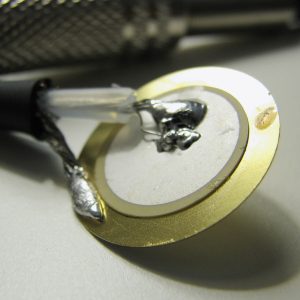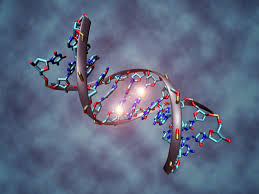In September 2008, a new night club in Rotterdam opened their doors. Their novelty to attract customers was a sustainable, energy-generating dance floor.
Unlike normal floors, an energy-generating dance floor collects the energy generated by the dancers’ jumps and turns, and transforms it into electricity. This electricity can then be used for other purposes, such as lighting, amplification and all other things that make a dance club what it is.
The physics behind this is called piezoelectricity. In short, piezoelectricity is mechanical energy transformed into electricity by means of squeezing. Some materials, usually specific classes of crystals or ceramics, have piezoelectric properties. When they are deformed – for example, by night-clubbers performing their dance moves on it – they create electrical potential. This charge can then be harvested and stored in a rechargeable battery.
This phenomenon is not new. It was discovered in 1880 by the Curie brothers, and is already widely used in gas lighters, inkjet printers, ultrasound equipment, quartz watches and not to forget, perhaps the most expressive example: the tiny little crystal on the bottom of a record player’s cartridge.
For example, when many of these crystals are put into a dance floor, they can produce sufficient electricity to power up the DJ’s equipment, provided, of course, that the music is good and enough people are willing to dance.
The club owner must certainly have seen the effect in his energy bill, although back in 2008, this technology was very expensive and the cost of the floor far exceeded its yield. However, the floor certainly attracted a lot of media attention and subsequent visitors.
 Nowadays, there are energy-generating sidewalks, subway stairs and platforms, highways, fitness centres, playgrounds and even buildings. These places aren’t chosen randomly, of course. The beauty of piezoelectric harvesting lies in the fact that it collects energy that has already been wasted. Let people drive, walk, play, run and dance as they always do, and turn the energy produced by these everyday activities into a renewable product.
Nowadays, there are energy-generating sidewalks, subway stairs and platforms, highways, fitness centres, playgrounds and even buildings. These places aren’t chosen randomly, of course. The beauty of piezoelectric harvesting lies in the fact that it collects energy that has already been wasted. Let people drive, walk, play, run and dance as they always do, and turn the energy produced by these everyday activities into a renewable product.
The amount of energy produced by a single piezoelectical cell is small, so large scale energy harvesting in places with high density traffic seems to be the most cost efficient application of the principle. However, this certainly isn’t the end of it; increasingly more technology no longer requires a lot of power any longer, such as sensors and LED lights. Sensors fed by batteries produce waste when the battery is replaced. A self-sustaining piezoelectical sensor does not.
Less power-hungry technology combined with the idea of “just keep on doing what you’re doing” opens up new horizons for small scale piezoelectric applications. In the medical field for example, cardiac pacemakers can be powered by energy harvested from the carrier’s own pulsating arteries, essentially turning a person into their own power source.
Traditionally, military applications are a huge driver for academic research into new technologies, and this had led to piezoelectric textiles that collect energy from a soldier’s movements, storing it in wearable batteries. This application immediately reduces the number of batteries soldiers have to carry with them in order to power their electronic devices, giving the soldier an advantage over those who travel a lot less lightly and reducing the risk of running out of power at critical moments.
As it happens, these new technologies are currently too costly for the consumer market, although cars and computers were once too. Given the current commercial interest in this technology, it is only a matter of time before the market finds ways of making wearable energy harvesting and storage more cost effective, the batteries more flexible and the fabrics more attractive.
When this happens, wearable, stretchable batteries integrated in energy-harvesting textiles or the soles of our shoes can replace the classic battery by producing and storing energy through simply living our daily lives, allowing us to recharge our mobile electronics as we go. A cell phone running out of power will then be a definitive thing of the past, and just imagine all the other things we can do with this reclaimed energy.
Want more? Don’t be sad that the article is over! We got plenty of other exciting stuff to share with you. Subscribe to our monthly newsletter and we’ll keep you up to date with our latest news!
string(3) "yes" NULLGene therapy is the treatment of a disease by replacing or altering a gene that is abnormal and whose abnormality is responsible for the disease. It can also supplement genes that are completely absent.
When a gene is abnormal or absent, the product for which it is supposed to be a blueprint (its ‘expression’) will be faulty, absent or even do the exact opposite of what it is supposed to do. This can cause cells to either malfunction, function too well or do things that they’re not supposed to do, causing diseases like blindness, auto-immune disease and cancer.
By successfully introducing the corrected gene into the human cells, such diseases may be treated or even cured. Besides correcting faulty genes, gene therapy can also be used to deliver genes that speed up the destruction of cancer cells, deliver bacterial or viral genes as a form of vaccination or provide genes that stimulate healing of damaged tissue.
Delivering genes is easier said than done, of course. The human body doesn’t really like the introduction of ‘foreign’ material. Our immune system is made to neutralise unknown bodies, which means that simply injecting the corrected cells and hoping for the best won’t be very effective; the altered genes need to be delivered into the patient’s cells and subsequently incorporated into the genetic material of those cells. Unfortunately, penetrating a human cell without destroying it altogether is the next major hurdle to take.
However, there is a type of organism that is exceptionally good at this: viruses. Viruses attach themselves to a host cell, inject their genetic material into it and then use the cell’s copy function to make copies of themselves. As a bonus, they usually also bypass the immune system until they have done this, making them an almost ideal transportation method (The word ‘almost’ is used because the viruses have to be made innocuous first, of course, otherwise the patient would not only receive gene therapy but be infected with the virus as well).
Genes can also be delivered within tiny envelopes of fat molecules. As cell membranes contain a very high concentration of fat molecules, the envelope can carry the altered gene into the cell by pretending to be one of the cell’s own molecules.
The concept of gene therapy isn’t new. In 1970, Stanfield Rogers, an American doctor theorised that ‘good DNA’ could be used to replace defective DNA in patients with genetic disorders, and tried this idea out on two sisters who were suffering from a genetic disorder called argininemia. His attempt was unsuccessful.
In 1972, Theodore Friedmann and Richard Roblin published a paper in Science called, ‘Gene therapy for human genetic disease’, referring to Rogers and urging himto proceed with caution.
It wasn’t until 1990 when the first actual gene therapy was performed on a human: a four year old girl at the NIH Clinical Centre in Bethesda, Maryland, suffering from a congenital disease called adenosine deaminase (ADA) deficiency was given corrected genes using her own white blood cells.
Although gene therapy has shown promising results in clinical trials, governments are hesitant to allow commercialisation of these therapies, mainly because of poor and sometimes lethal results in the 1990s as well as ethical pressure.
 When gene therapy is administered to a single individual and targeted to specific cells of that individual, the effects are confined to this one person. This is called somatic gene therapy. However, when not only an individual’s body cells are altered, but also his or her reproductive cells (gametes), the gene therapy leads to heritable alterations in the genome that is then passed on to future generations. This is called germline therapy and this has raised a whole catalogue of ethical concerns about the possible implications of altering genes.
When gene therapy is administered to a single individual and targeted to specific cells of that individual, the effects are confined to this one person. This is called somatic gene therapy. However, when not only an individual’s body cells are altered, but also his or her reproductive cells (gametes), the gene therapy leads to heritable alterations in the genome that is then passed on to future generations. This is called germline therapy and this has raised a whole catalogue of ethical concerns about the possible implications of altering genes.
Although germline therapy could counteract hereditary diseases, many countries prohibit its use due to a lack of knowledge about its long-term effects and fear over unknown risks for future generations.
Somatic gene therapy has fewer ethical issues compared with germline gene therapy, but is merely still in its early stages of design and is continuing to face unsolved technological problems, including:
Use of viral vectors such as the transport mechanism to deliver the corrected DNA even carries the risk of the virus recovering its ability to cause disease once it has penetrated the target cells. There is also a risk of inducing tumour growth, when the inserted DNA is incorrectly placed.
A relatively new method is gaining access to a cell by applying an electrical charge to create tiny openings in the cell’s membrane. This technique is called electroporation and is potentially extremely precise because it allows doctors to target specific groups of cells, rather than any set of cells.
Rubinsky and Huang, two engineers at the University of California at Berkeley, discovered that cells acts like diodes, passing or blocking electricity at specific voltages. They built a single living cell into an electronic chip and when it was hit with just the right charge, the cell membrane opened, allowing the electricity to pass from the top to the bottom of the bionic chip. By recording what voltage caused this phenomenon to occur, it is now possible to determine precisely how much electricity it takes to pry open different types of cells.
As new technologies such as this ‘bionic chip‘ are developed further , and the technological problems mentioned above are solved, it is very likely that gene therapy will play an increasingly important and prominent part in medicine in the decades to come.
Sources:
http://en.wikipedia.org/wiki/Gene_therapy
http://www.medicinenet.com/script/main/art.asp?articlekey=12662&page=4
http://www.news-medical.net/health/What-is-Gene-Therapy.aspx
http://www.news-medical.net/health/Gene-Therapy-Issues.aspx
http://EzineArticles.com/4480034
Want to find out in what way health impacts our quality of life? We got you covered! Find out more about health and feeling at ease.
string(3) "yes"
Mollit duis Lorem amet veniam minim ad.Voluptate commodo labore aliqua quis esse aliqua.Veniam tempor elit velit non.